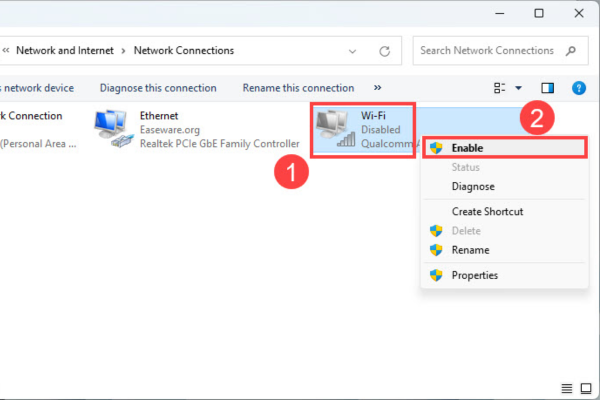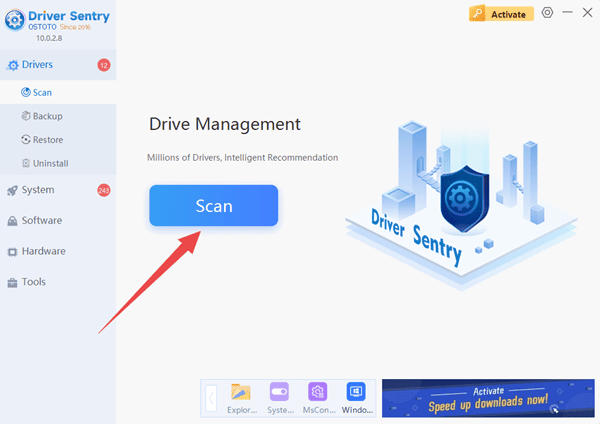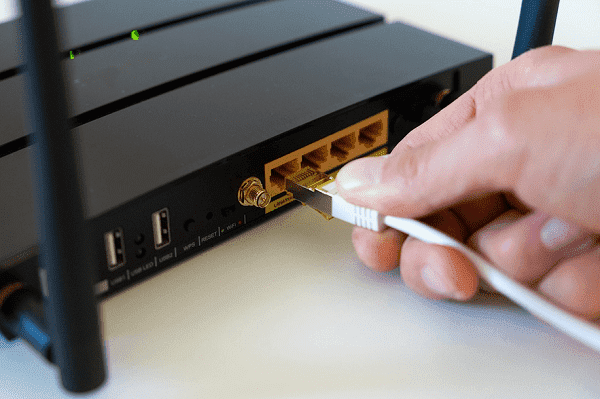Has your Dell laptop been giving you grief by refusing to connect to WiFi? It's a common headache for many users, but you're not alone, and there's no need to panic. In this guide, we'll walk you through some easy-to-follow steps to fix "laptop can't connect to wifi" issue and get your Dell laptop back online.

Figure Out Why Dell Laptop Can't Connect to WiFi
The first step in solving the "laptop can't connect to wifi" issue is to figure out where the problem lies. It could be your laptop, the WiFi router, or even something else. A quick and simple way to check is to try connecting other devices to the same WiFi. For example, use your smartphone or another laptop.
If none of the other devices can connect to the WiFi, the problem is likely with the router. Maybe the SSID broadcast is disabled, or the router itself is malfunctioning. You should contact the router's manufacturer for help.
But if other devices connect without a hitch and your Dell laptop is the only one having trouble, the issue is probably with your laptop. Try moving your Dell laptop closer to the router. Sometimes, a weak signal can prevent a connection. If that doesn't work, don't worry. There are more solutions to try.
Ways to Fix Dell Laptop Can't Connect to WiFi Issue
Turn On the WLAN Feature
If your Dell laptop not connecting to WiFi happens, one possible reason is that the WLAN feature is turned off. You can enable it in two ways.
Use the WiFi Button or Shortcut
Some Dell laptops have a dedicated WiFi switch on the side of the device. Check if yours does and make sure it's turned on. If not, flip the switch.
Many Dell laptops also have a keyboard shortcut, like Fn + F5, to enable or disable WiFi. Maybe you accidentally pressed it. So, give it a try and see if that turns on the WiFi.
Configure Network Settings
If your laptop doesn't have a physical WiFi switch, you can enable the WLAN feature through the computer settings. Press the Windows logo key and the R key at the same time. This opens the Run dialog box. Type "control" and hit Enter.
In the Control Panel, select "Network and Sharing Center". On the left-hand side, click "Change adapter settings". Find your WiFi connection (it might be named "WiFi" or "Wireless Network Connection"). Right-click on it and select "Enable". If it's already enabled, you'll see "Disable" as an option. In that case, you can try disabling and then re-enabling it. Restart your laptop and see if it can connect to the WiFi now.

Check the WLAN AutoConfig Service
The WLAN AutoConfig service is crucial for connecting to a wireless network. If it's not running, your Dell laptop not connecting to WiFi issue exists. Here's how to check and start it.
Hold down the Windows logo key and the R key simultaneously to bring up the Run dialog box. Type "services.msc" and click OK. Scroll down in the Services window and double-click on "WLAN AutoConfig".
In the properties window, make sure the "Startup type" is set to "Automatic" and the "Service status" is "Running". If not, change the settings, click "Apply", and then "OK". Try connecting your Dell laptop to WiFi again.
Update Wireless Network Adapter Driver
An outdated or missing wireless network adapter driver can be the reason your Dell laptop can't connect to WiFi. You can update the driver in two ways: manually or automatically.
Manual Update
You are able to access the website of the manufacturer of your network adapter. Search for the latest driver for your specific adapter model and download it. Then, install it on your laptop. But this method can be time-consuming and requires some technical know-how.
Automatic Update with PcGoGo Driver Sentry
If you don't want the hassle of manual updates, PcGoGo Driver Sentry is a great option. PcGoGo Driver Sentry can automatically detect your system and find the correct drivers for your wireless network adapter. It's simple to operate and spares you a great deal of time.
First, download and install PcGoGo Driver Sentry. If "my laptop won't connect to wifi" issue happens, you can download it on another device and transfer it to your Dell laptop using a USB drive.
After installation, open PcGoGo Driver Sentry and click "Scan Now". The software will scan your computer and identify any problem drivers. Click the "Update" button next to the wireless network adapter device name to automatically download and install the updated driver. You can also click "Update All" to update all the problem drivers on your system. After the update, restart your laptop and check if it can connect to WiFi.

Uninstall Incompatible Applications
If your Dell laptop started having trouble connecting to WiFi after installing new applications, it could be due to an incompatible program. Some users have reported that SmartByte can cause "my laptop won't connect to wifi" issues. If you have it installed, try uninstalling it.
To open the Run box, press the Windows logo key in combination with the R key. Type "appwiz.cpl" and click OK. In the Programs and Features list, find the application you want to uninstall (like SmartByte), click "Uninstall", and follow the on-screen instructions. After uninstalling, restart your computer and try connecting to WiFi.

Manually Connection
If none of the above methods work, you can try manually connecting to the WiFi network. Press the Windows logo key and R, type "control", and hit Enter.
In the Control Panel, choose "View by Small icons" or "View by Large icons", then click "Network and Sharing Center". Click "Set up a new connection or network", select "Manually connect to a wireless network", and click "Next". Enter the required information, such as the network name, security type, encryption type, and security key. Follow the instructions to complete the process. Restart your laptop and check if it can connect to the WiFi.
Conclusion
Dealing with "laptop can't connect to wifi" can be frustrating, but with these steps, you should be able to solve the problem. And remember, PcGoGo Driver Sentry can be a great help in keeping your drivers updated and preventing future connection issues. If you've tried all these methods and still can't get your laptop connected, it might be time to seek further technical support.